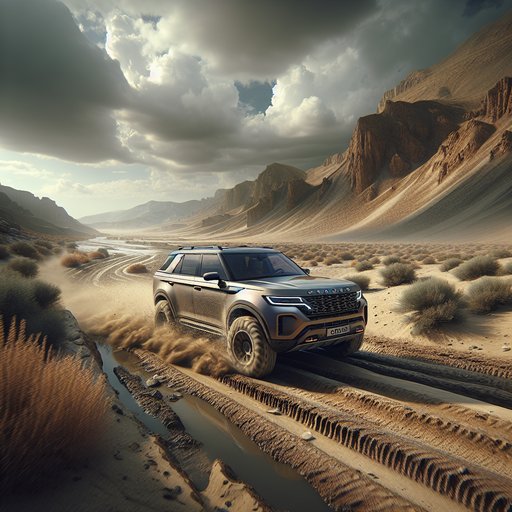
We spent two days evaluating a 2024 Land Rover Defender 110 P400 with air suspension, two-speed transfer case, and the optional active rear locking differential. Our route mixed rocky climbs, rutted fire roads, mud, and dune-like sand to focus on ground clearance, 4WD logic, and real-world terrain handling.
Our test vehicle was a Defender 110 P400 (395 hp, 406 lb-ft) on factory all‑terrain tires with adjustable air suspension and Terrain Response 2. The full-time 4WD system uses a twin-speed transfer case with a low range and an electronically controlled center coupling, plus an optional rear e-diff. Key numbers: up to 11.5 inches of ground clearance in off-road height, approach up to 38 degrees, departure up to 40 degrees, breakover around 28 degrees, and a 35.4-inch wading depth when properly prepared. Testing covered a 17-mile rocky loop (rated moderate/difficult), a muddy woodland section after rainfall, and soft sand near a lakeshore.
Ambient temps hovered around 82°F. We aired the tires down to 24 psi for rocks and 18 psi for sand, used low range for steep grades, and cycled through Terrain Response modes (Rock Crawl, Mud/Ruts, Sand) to assess calibration differences. A shallow water crossing was attempted at roughly 20–22 inches to verify sealing and driveline response. Ground clearance and geometry proved strong assets.
In off-road height, the Defender cleared football-sized boulders and crested washes without significant belly contact; we recorded one gentle skid-plate kiss at a sharp breakover, confirming the value of factory underbody protection. Short front and rear overhangs help avoid bumper strikes, and the air suspension’s extra lift buys crucial margin on ledgy steps. The 110’s wheelbase is stable on climbs but can still high-center on abrupt crests if you rush the approach. The 4WD system is confidence-inspiring.
Low range engages quickly, and throttle mapping in Rock Crawl is beautifully measured, allowing controlled tire placement at walking pace. Brake-based traction control reacts promptly; when a wheel lifted, the system clamped within a beat, and the rear locker’s engagement was seamless, pushing the truck forward without driveline shudder. Hill Descent Control holds set speeds from about 1–5 mph, with smooth braking on loose stone. The gearing feels deep enough for technical work without excessive rev flare on transitions.
Terrain handling is versatile. In rocks, independent suspension limits absolute articulation versus solid-axle rivals, yet the electronics compensate well, and the ClearSight ground-view camera meaningfully reduces underbody strikes by improving placement. In mud, the AT tires cleaned adequately at 18–20 psi; Mud/Ruts mode kept momentum without spinning. On sand, Sand mode relaxes traction control, allowing gentle wheelspin to float the chassis, and the truck tracks straight even on off-camber ridges.
We waded just over 20 inches with no drama; the official 35.4-inch rating inspires confidence if you observe proper procedures. Overall, the Defender 110 balances geometry, smart 4WD calibrations, and usable tech to excel in mixed terrain. For frequent rock crawling, a Wrangler Rubicon or Bronco with 35s and disconnecting sway bars will step farther, but the Defender’s refinement and composure on- and off‑road make it a superb overlanding platform. Opt for the rear e-diff, keep wheel sizes to 18–19 inches, fit quality all-terrain tires, and carry recovery gear to fully unlock its capability.












